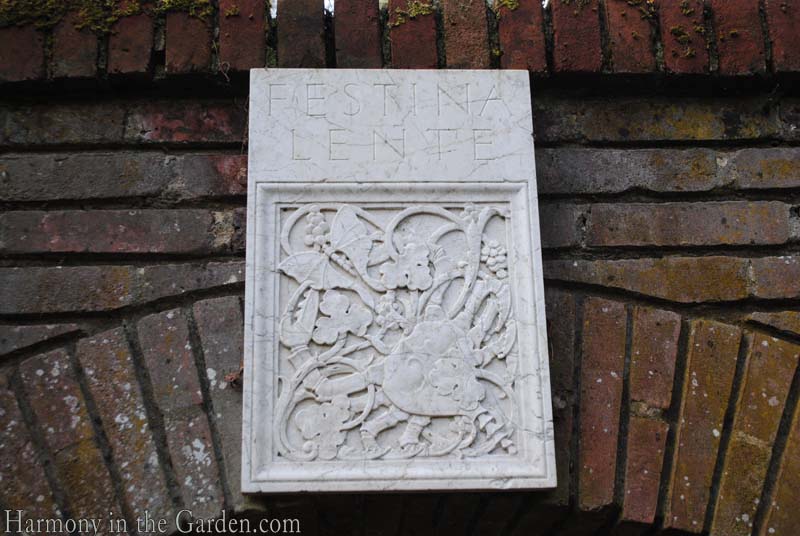 Festina Lente. Powerful words used since ancient times by the likes of emperors, military commanders, authors, artists and even Shakespeare himself. Translated, festina lente means ‘hurry slowly’. Personally, I think my neighbor’s bumper sticker says it best – ‘Hurry up and slow down‘.
Festina Lente. Powerful words used since ancient times by the likes of emperors, military commanders, authors, artists and even Shakespeare himself. Translated, festina lente means ‘hurry slowly’. Personally, I think my neighbor’s bumper sticker says it best – ‘Hurry up and slow down‘.
Out of the corner of my eye I discovered this plaque placed high up on one of Filoli’s many garden archways. I pondered its meaning as I slowly wandered through the garden on this cold and quiet winter morning.
It was one of those magical days as I was not only scheduled to speak at this breathtaking venue, but I also had an entire hour to kill before it was my turn on stage.
It was chilly, foggy and early in the morning (before the public was allowed in), and after promising not to hurt myself on the slippery bricks, I convinced a sympathetic security guard to let me wander the gardens.
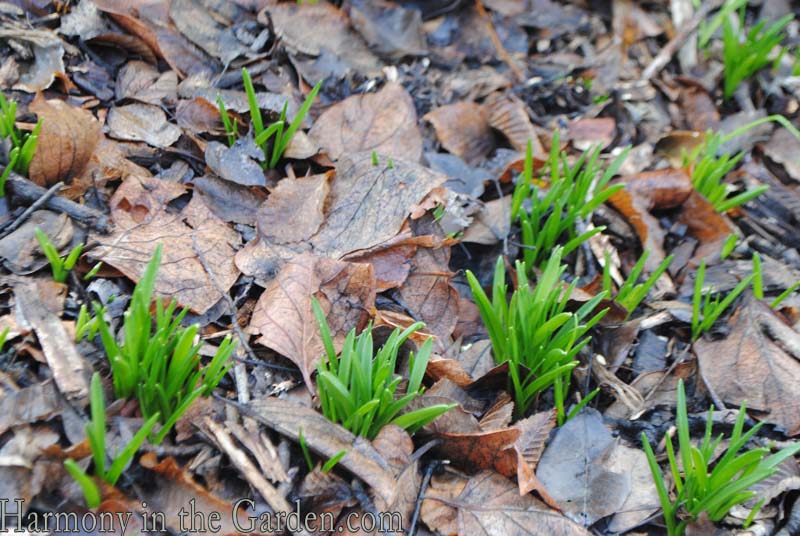 Winter is my favorite time to visit public gardens and where I usually find the most inspiration.
Winter is my favorite time to visit public gardens and where I usually find the most inspiration.
In fact, when consulting I often tell my clients to pick the bleakest time of year to visit as many public gardens as possible to get a really good sense of what a beautiful year-round garden can look like.
If there’s a clever use of texture and form then the garden will sing with harmony – despite the lack of foliage and flowers. If not, then it’ll resemble a barren wasteland with annuals long gone and perennials fast asleep.
It should come to no surprise that Filoli was certainly singing this time of year, though in a much softer voice.
To me, this quiet voice is what makes a winter garden so powerful, requiring a festina lente attitude to best be appreciated. Slow your pace, stand still and contemplate, and you will be rewarded with an entirely different definition of what makes a garden beautiful.
Grand public gardens, like this one, can sometimes intimidate gardeners as it’s one thing to witness the brilliance of renowned architects, designers and a fleet of year-round gardeners and another to be able to translate these ideas into your own garden. I thought it might be helpful if I divided my photos into 3 main categories of winter interest in hopes that it inspires you to translate them into your own garden.
1. Form
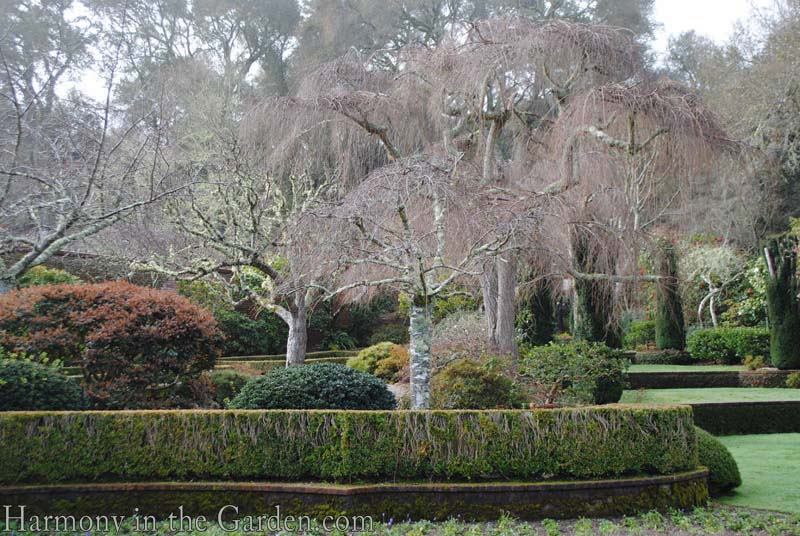 Often referred to as the ‘bones of the garden’, a plant’s evergreen form is what helps carry the garden throughout the year.
Often referred to as the ‘bones of the garden’, a plant’s evergreen form is what helps carry the garden throughout the year.
While the form is certainly present in the overly exuberant months of spring and summer, it begins to make its appearance known in the quieter days of fall.
But it’s in the stillest days of winter, when form shines the brightest.
Just look at the brilliant mix of evergreen and deciduous plants in this photo. So many shapes, colors and sizes are mixed throughout which allow this garden to continue to shine.

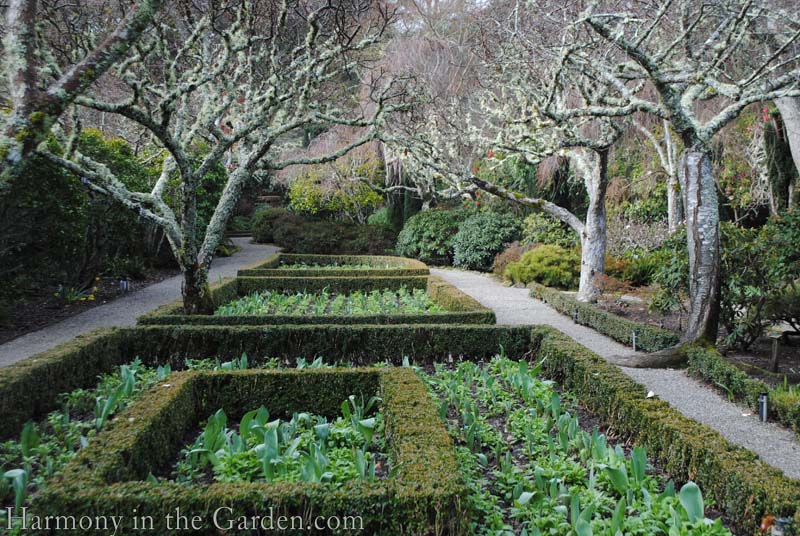 Take a critical look at your garden right now. Are there evergreen forms helping to anchor your perennial beds? Are there a mix of evergreen shrubs with your deciduous trees?
Take a critical look at your garden right now. Are there evergreen forms helping to anchor your perennial beds? Are there a mix of evergreen shrubs with your deciduous trees?
Or is everything flat and lifeless. If you have a layer of snow blanketing the ground, is that layer helping to emphasize a conical, vertical or round shape? Or is it just plain boring.
These are the things to look for right now to help determine if you need to add more evergreen anchors to your garden once spring finally arrives.
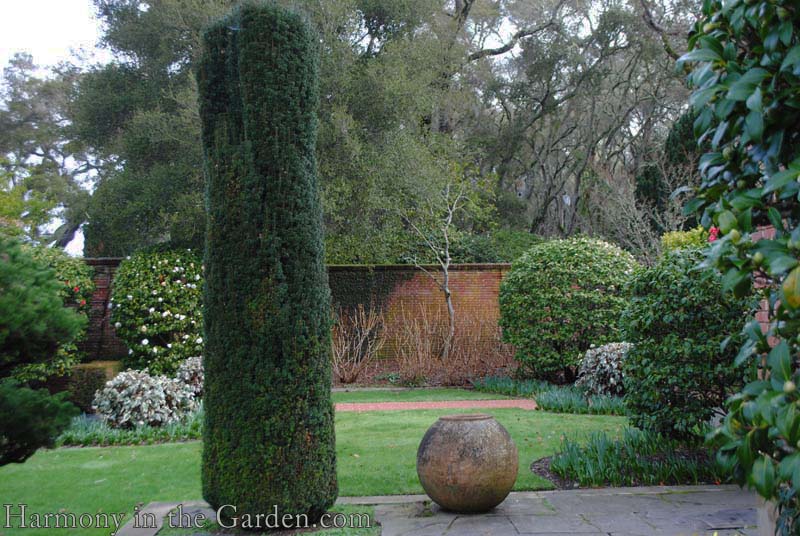
Artwork often takes center stage during a garden’s down time, as is the case with this simple circular pot.
I love how it softly echoes the circular shrub in the background, yet stands out in stark contrast to the vertical form of the neighboring yew.

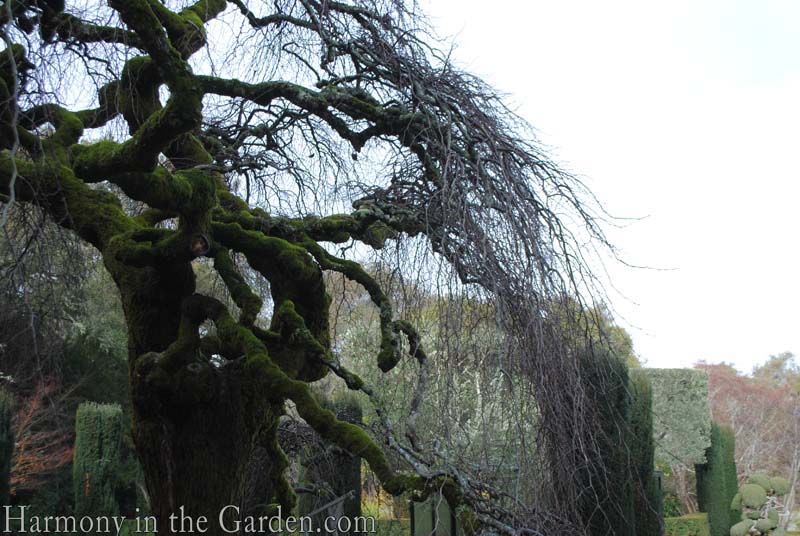
But there’s more to a garden than an evergreen form.
Trees with a distinctly unique structure (like this Camperdown Elm) shine their brightest once they’ve shed their foliage.
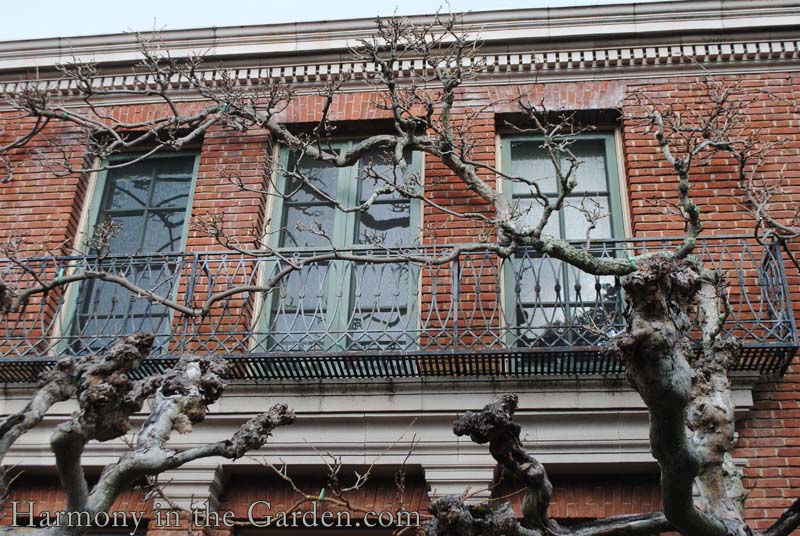 Or take this wisteria vine, for example.
Or take this wisteria vine, for example.
Obviously, it’s spectacular when in full bloom, stopping people dead in their tracks with its cascading clusters of softly fragrant blooms.
But part of me likes it better in the winter, when it’s gnarled branches create a striking silhouette against the warm colored bricks.
2. Texture
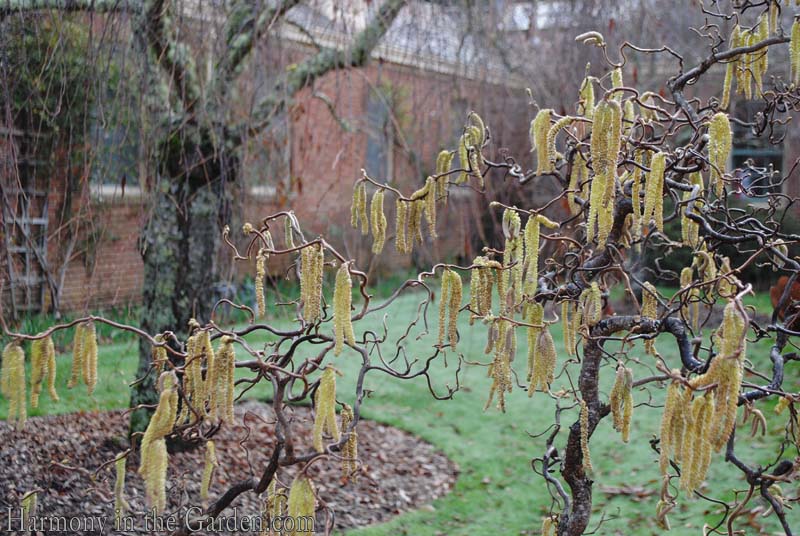 Texture in the garden takes its turn on stage during the winter months, thanks to elements such as seed pods, seed heads, bark, berries and catkins.
Texture in the garden takes its turn on stage during the winter months, thanks to elements such as seed pods, seed heads, bark, berries and catkins.
This Harry Lauder’s Walking Stick (corylus avellana ‘Contorta’) is one of my very favorite winter plants, with its drooping, nubby tassels commanding all who pass to ‘look here!’ 

Or the string-of-pearl catkins of a Silk Tassle bush (garrya elliptic) that hang in clusters like tinsel carefully draped on a Christmas tree.
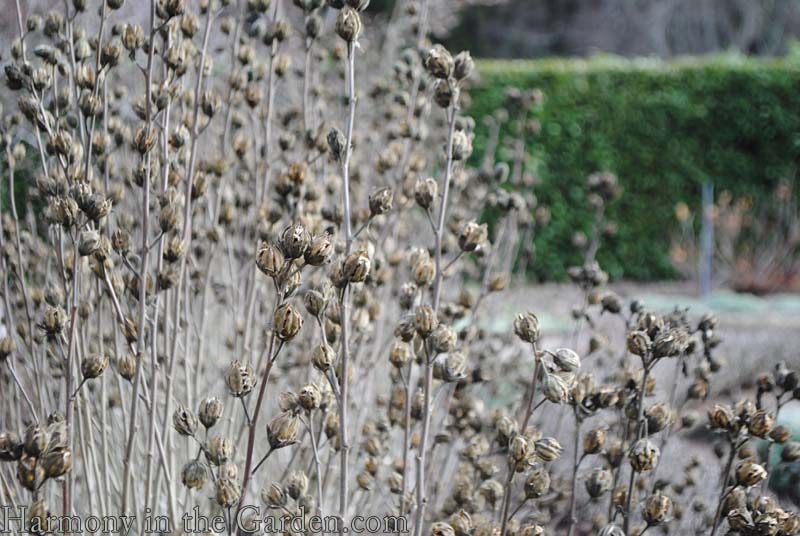 And don’t forget the beauty of dried seed-heads!
And don’t forget the beauty of dried seed-heads!
These Rose of Sharon (hibiscus syriacus) seed heads are sturdy enough to last through the winter and add such a textural element to the garden. Not to mention a critical food source for hungry birds.
Some of my other favorite winter seed heads are those of the Lion’s Tail (leonurus leonotis) and the Jerusalem sage (phlomis fruiticosa).
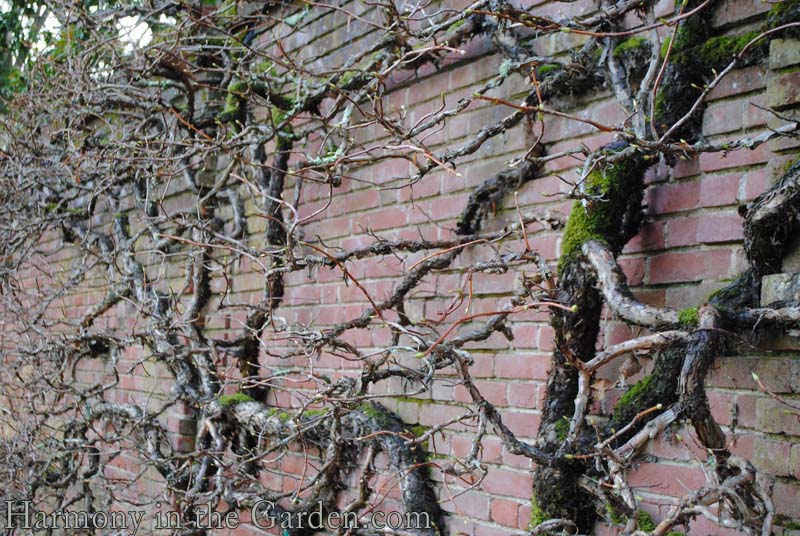
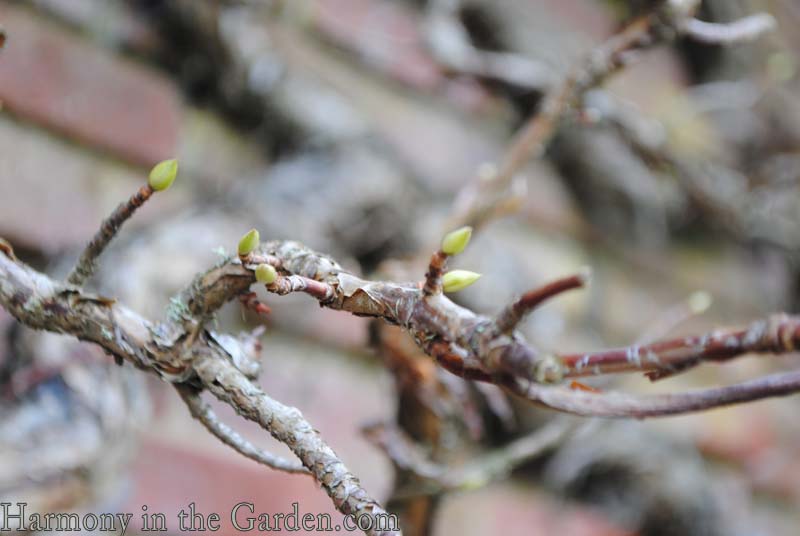

Tree bark, branches and deciduous stems are often a source of subtle texture, as is the case with this Chinese hydrangea vine (schizophragma integrifolium).
Not only is it strikingly structural growing against this brick wall, but the peeling and papery branches add another element of subtle beauty to this vignette.
3. Color
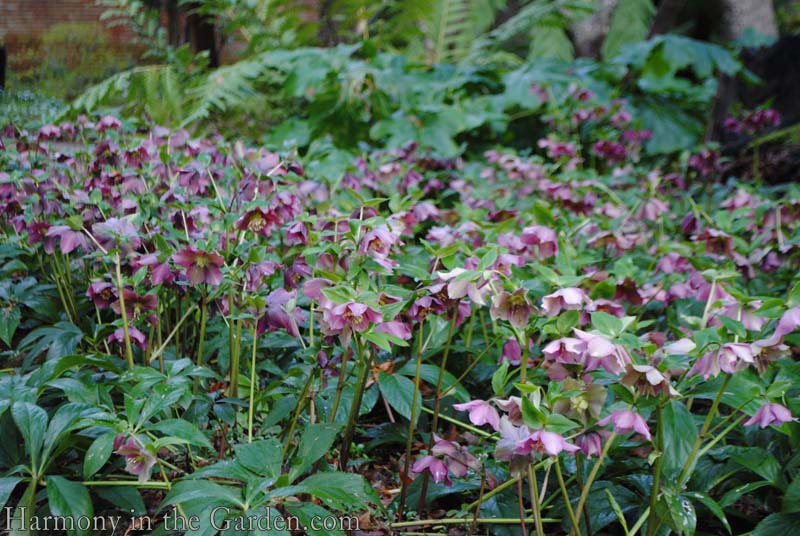
What would a winter garden be without at least a few early blooming flowers?
The drift of Lenten rose (hellebore sp.) were such a welcome burst of color in this otherwise green, gray and tawny garden.
These are always some of my favorite flowers in my own garden and are the first to bloom, followed closely behind by the Daphne and Sarcococca.
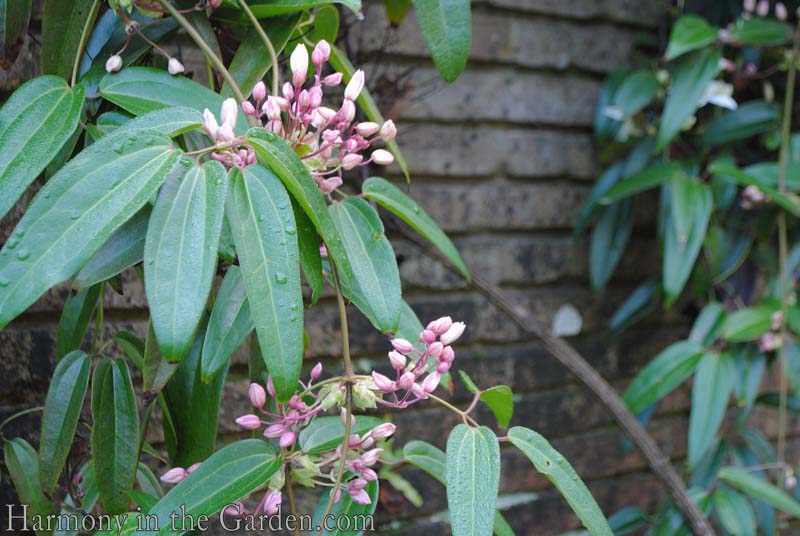
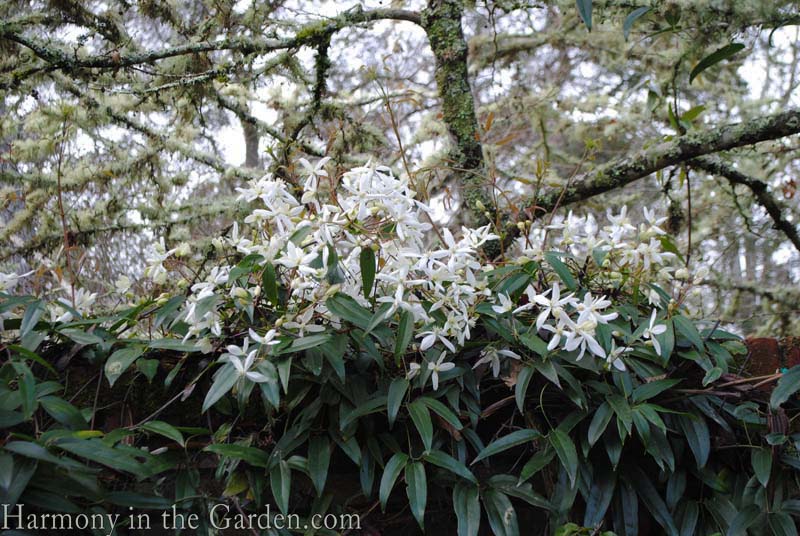
 The soft rose colors of the Evergreen Clematis buds (c. armandii) perfectly echo the nearby hellebores. And then, as if right before your eyes, they transform into the brightest white star-shaped flowers. One of my favorite clematis varieties, this one can cover a fence in no time.
The soft rose colors of the Evergreen Clematis buds (c. armandii) perfectly echo the nearby hellebores. And then, as if right before your eyes, they transform into the brightest white star-shaped flowers. One of my favorite clematis varieties, this one can cover a fence in no time.
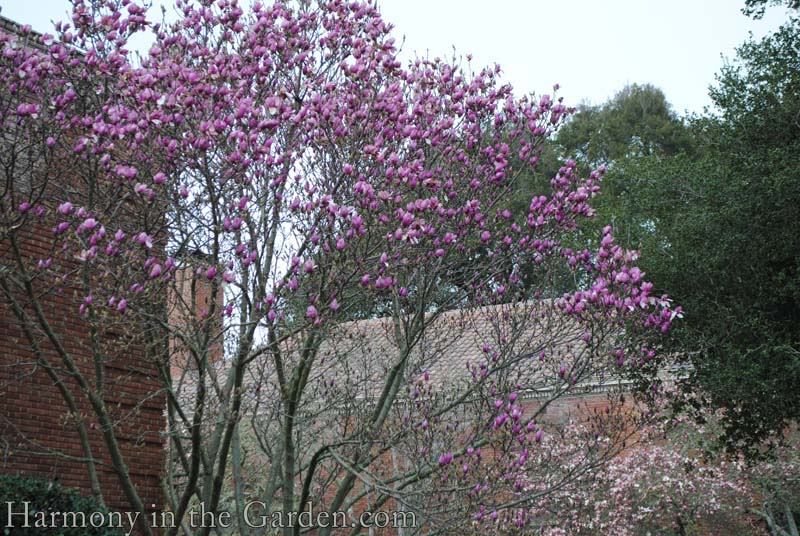


Oh, and the magnolias! Thanks to the warm weather we’ve had this winter they’re bursting into flower earlier than ever, putting on quite the show.
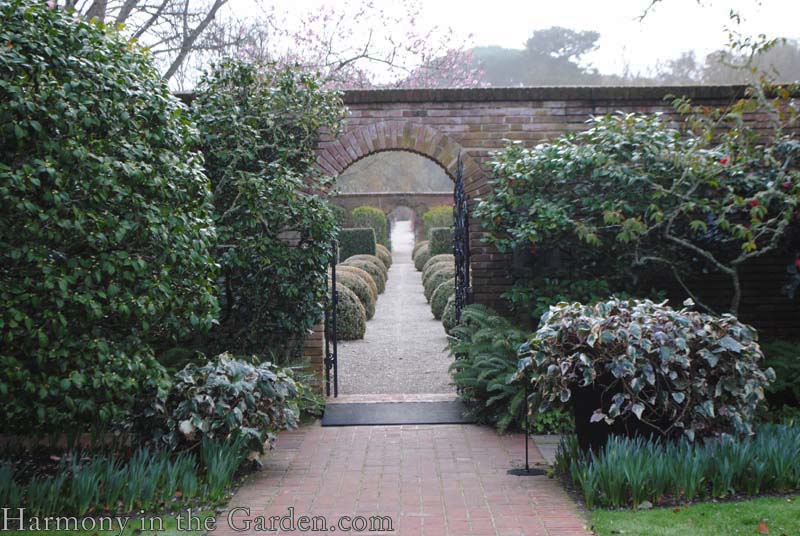
As winter begins to loosen its grip, I encourage you to take a leisurely stroll through your garden to see what you can discover.
And if you don’t find any form, structure or texture – that’s perfectly okay! Now, at least, you know where to begin to make some changes once spring finally arrives and the nurseries are calling your name.






13 Comments
That was as if I was touring this garden! Thanks for a much-needed burst of beauty for those of us buried under two feet of snow!!
Hi Michele – I’m glad I could provide you with a little glimmer of a snow-free garden. Hang in there – spring will be at your doorstep before you know it (not soon enough, right?)
As I head out to Filoli next week to arrange flowers I will be thinking of these great pictures and your commentary. Thanks!
Lucky you, Jo! It must be a highlight of your week to arrange flowers in such a beautiful setting. I bet the daffodils will finally be opened by then, too. They were just on the verge when I visited, plump and ready to explode…
they were? good to know my briberies have been well spent. those CT girls are something else. at michelle’s urging (insistence) i did open a facebook acct and it has put me in touch with so many great people and gardeners and i’m able to gain new insights, perspectives and ideas,,, not the least of which come from that Rebecca in CA.
ok, not EVERY insect maybe but it sure felt like it
I’m so glad you joined FB, Jeff. Believe it or not, Michelle is also the one who urged (insisted) that I join Twitter several years ago which, in its heyday, introduced me to so many fabulous gardeners from around the world. Many whom I’ve visited, or they’ve stayed here, proving online friendships can absolutely turn into more traditional ‘real’ friendships. Social media has been such a powerful thing in my life I even gave a talk about it to GWA (along with Susan Morrison, my favorite social media treasure of all). You and I both have Michelle to thank for opening our eyes to this world of hers!
Oh Rebecca, you have out-done yourself. Thank you for this.
Thank YOU, Karen – I’m so glad you enjoyed it!
Kudos to you. Your pictures and writing captured the soul of my favorite garden.
filoli, beautiful as always/i remember it well and miss it often. Camperdown Elm has been my most elusive plant for the garden. i planted and every insect known to man came . is it that way everywhere or was i just lucky?
Every insect known to man, Jeff? Wow – you do have a special touch! 😉 Personally, I haven’t planted any so I can’t speak from personal experience. But the one at Filoli is certainly healthy. By the way – were your ears burning last week? Michelle and Lynne were raving about you and your work.
Where did you get a Camperdown Elm?!?! Please tell!
Jeanine Valadez, i received a Camperdown probably 30 years ago as a gift / it is no longer gracing me with it’s presence. believe it or not, i saw some a few years back at Home Depot! my replacement tree and one that always garners attention and everyone loves including me is Ulmus alatus ‘Lace Parasol’ . J.C. Raulston gave me this plant decades ago at maybe 18″ in height, not even a whip. It is beautiful now and NO maintenance and that beautiful corky bark, i wish i could attach a photo for you. especially striking after a snowfall